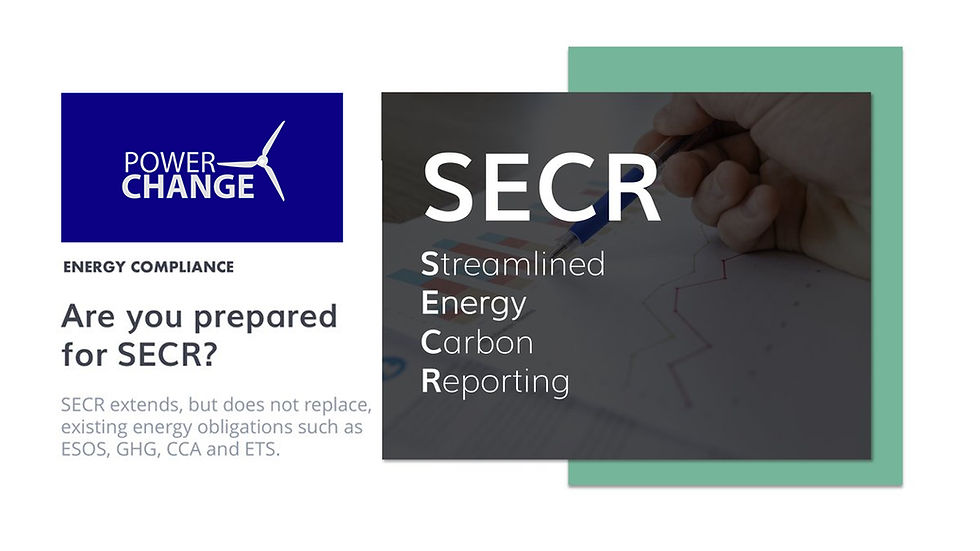SECR will replace the CRC and is being promoted as a less complicated reporting framework.
- Mar 3, 2019
- 1 min read

The Department of Business, Energy and Industrial Strategy (BEIS) recognised that the range of energy efficiency policies can create complexity and add administrative burdens to those that qualify. In 2016, the UK government announced reforms to improve the tax and reporting regime.
SECR will replace the CRC and is being promoted as a less complicated reporting framework based on existing mandatory requirements for reporting Greenhouse Gas emissions.
The Department of Business, Energy and Industrial Strategy (BEIS) recognised that the range of energy efficiency policies can create complexity and add administrative burdens to those that qualify. In 2016, the UK government announced reforms to improve the tax and reporting regime.
SECR will replace the CRC and is being promoted as a less complicated reporting framework based on existing mandatory requirements for reporting Greenhouse Gas emissions.
With new legislation coming into effect next April 20, we answer some of the common questions you may have about the Streamlined Energy and Carbon Reduction (SECR) framework and how best to measure and reduce carbon footprint with solutions like our CEMARS product.
Who needs to comply with the SECR framework?
The legislation is going to be new for large unquoted companies and large limited liability partnerships (LLPs). The criteria is in a year, if two or more of the following requirements are met: Turnover £36 million or moreBalance sheet total £18 million or moreNumber of employees 250 or more. Large companies quoted on the stock exchange (PLCs) already have to comply with reporting their greenhouse gas emissions.
Companies that are currently reporting to CRC Energy Efficiency Scheme or Energy Savings Opportunity Scheme (ESOS) will typically now have to comply with this new legislation.




Comments